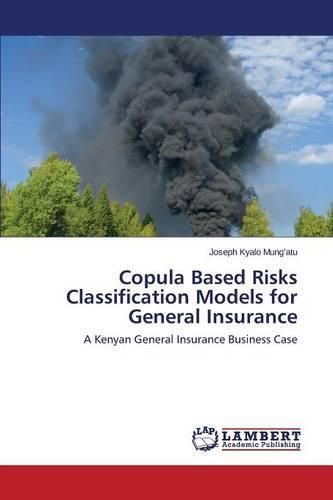Readings Newsletter
Become a Readings Member to make your shopping experience even easier.
Sign in or sign up for free!
You’re not far away from qualifying for FREE standard shipping within Australia
You’ve qualified for FREE standard shipping within Australia
The cart is loading…






This title is printed to order. This book may have been self-published. If so, we cannot guarantee the quality of the content. In the main most books will have gone through the editing process however some may not. We therefore suggest that you be aware of this before ordering this book. If in doubt check either the author or publisher’s details as we are unable to accept any returns unless they are faulty. Please contact us if you have any questions.
In risk classification, similar risks should be assigned to the same class with respect to each variable to ease their management. The dependencies among the risks are examined by fitting copulas, estimating the dependence parameters and lastly using distance matrices to cluster the risks together. Distances used in the classification were determined by the problem at hand. The empirical study derived its data from the general insurance business in Kenya where the risks were classified by the Copula based approach. The motivation of the study was driven by the fact that insurance companies had collapsed in the past, one reason being the type of business classes they collectively engaged in. It is therefore important to understand the dependencies between risks for better risk management. This work proposed the use of the upper tail dependence, measured by the tail index, derived from the dependence parameter in determining the retention limits for a re-insurance arrangement. This will ensure that the highly dependent risks in the upper tail will forward higher proportion to the re-insurer and vice versa.
$9.00 standard shipping within Australia
FREE standard shipping within Australia for orders over $100.00
Express & International shipping calculated at checkout
This title is printed to order. This book may have been self-published. If so, we cannot guarantee the quality of the content. In the main most books will have gone through the editing process however some may not. We therefore suggest that you be aware of this before ordering this book. If in doubt check either the author or publisher’s details as we are unable to accept any returns unless they are faulty. Please contact us if you have any questions.
In risk classification, similar risks should be assigned to the same class with respect to each variable to ease their management. The dependencies among the risks are examined by fitting copulas, estimating the dependence parameters and lastly using distance matrices to cluster the risks together. Distances used in the classification were determined by the problem at hand. The empirical study derived its data from the general insurance business in Kenya where the risks were classified by the Copula based approach. The motivation of the study was driven by the fact that insurance companies had collapsed in the past, one reason being the type of business classes they collectively engaged in. It is therefore important to understand the dependencies between risks for better risk management. This work proposed the use of the upper tail dependence, measured by the tail index, derived from the dependence parameter in determining the retention limits for a re-insurance arrangement. This will ensure that the highly dependent risks in the upper tail will forward higher proportion to the re-insurer and vice versa.